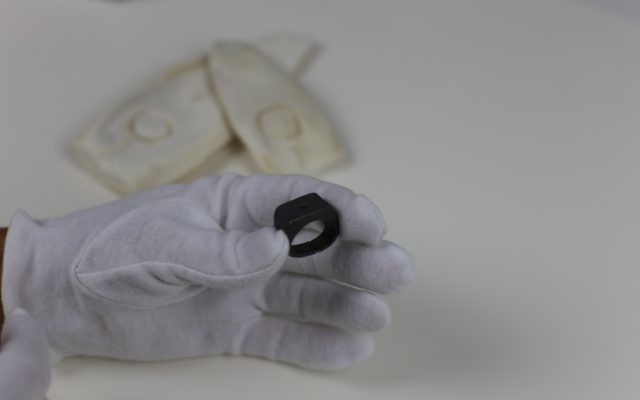Schindler’s ring
A UNIQUE piece of Holocaust history – a jewellery model used to craft a gold ring for Shoah rescuer Oskar Schindler – will go on display at the Jewish Holocaust Centre (JHC) next month, after lying unnoticed in Melbourne for half-a-century.

A UNIQUE piece of Holocaust history – a jewellery model used to craft a gold ring for Shoah rescuer Oskar Schindler – will go on display at the Jewish Holocaust Centre (JHC) next month, after lying unnoticed in Melbourne for half-a-century.
Long thought lost, the model that was used by Jewish workers at the end of World War II to make a gold signet ring for Schindler was found here decades later. It had been lying in the ring maker’s workshop in Melbourne for 50 years.
Schindler, the hero of Thomas Kenneally’s book Schindler’s Ark and the Steven Spielberg film Schindler’s List, was a German industrialist and member of the Nazi party who saved Jews by employing them in his factory and treating them humanely. About 1200 Jews were saved by him.
At the end of the war, one of Schindler’s workers, master jeweller Jozef Gross, made a gold ring for Schindler. This act is famously depicted in Spielberg’s film.
JHC curator Jayne Josem explained that grateful Jewish survivors in Schindler’s factory voluntarily had gold fillings extracted for the making of the ring.
While the ring itself was lost by Schindler shortly after the war, the ring model came to Australia with Gross and lay in his workshop in Melbourne for 50 years.
Gross “was a very private person and he chose not to share his story with the world”, said Josem.
“He only told his family and a few others about his war experiences. Importantly, he gave an in-depth description of the process used to make the ring to his Australian business partner,” she added.
The ring model, made from lead, was discovered by Gross’s son, Louis, in a box, along with other jewellery making paraphernalia, some time after Jozef passed away in 1997.
Louis Gross of Brighton told The AJN his father had misplaced the model among his belongings and could not locate it. After his father died, his business partner Andrew Belza gave Louis the box, which appeared to be “a load of junk and I didn’t think much about it”.
About a year later, he decided to show it to Belza so they could sort through it. Belza was astounded when he spied the elusive model Jozef Gross had used to make Schindler’s ring. Louis was elated, as his uncle Leo Rosner, a Melbourne Schindler survivor who was Jozef Gross’s brother-in-law, had been keen for the ring model to be found.
B’nai B’rith Courage to Care exhibited the model and Louis considered an offer from Yad Vashem to include it in its online exhibition, but chose to donate it to the JHC because “my father lived in Melbourne and I thought it was the appropriate place for it to reside”.
Gross, who had been married and had a child, was one of eight brothers and sisters, but was the sole survivor of his large family who all perished.
“It’s an honour to my father and the memory of his family. It’s also a memory of him as a jeweller – he was a master craftsman,” Louis reflected.
Josem told The AJN that as well as the ring model, samples of cuttlefish moulds, similar to the cast into which the model for Schindler’s ring was impressed, will be on display. The ring model will be exhibited from May 2.
PETER KOHN
For more information, visit www.jhc.org.au.

comments